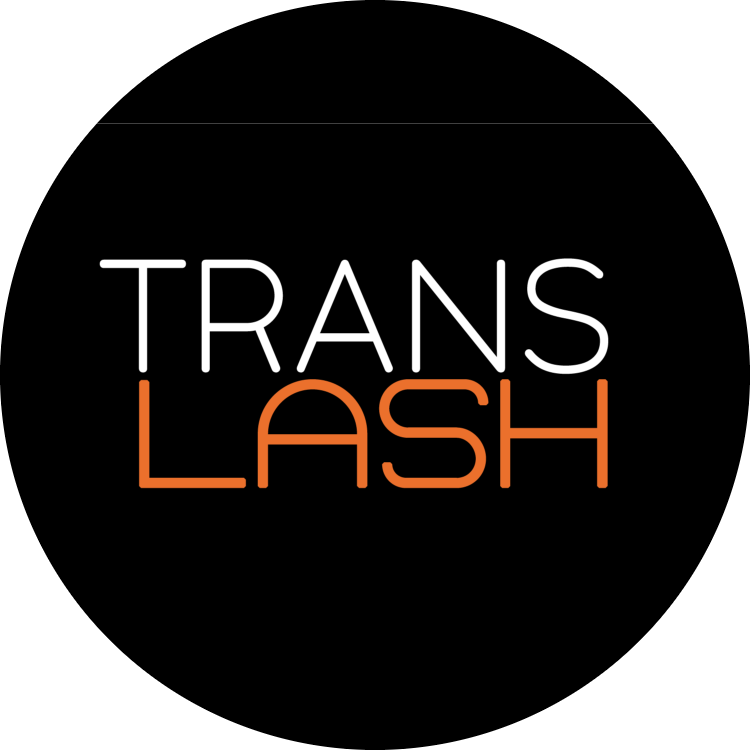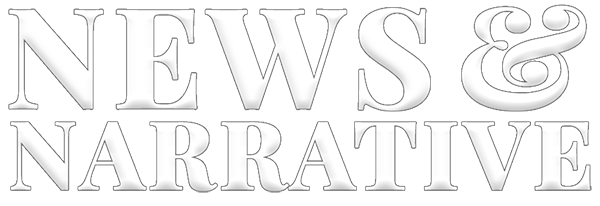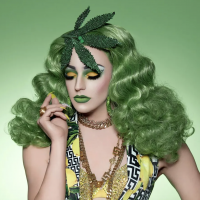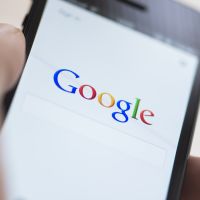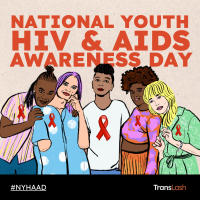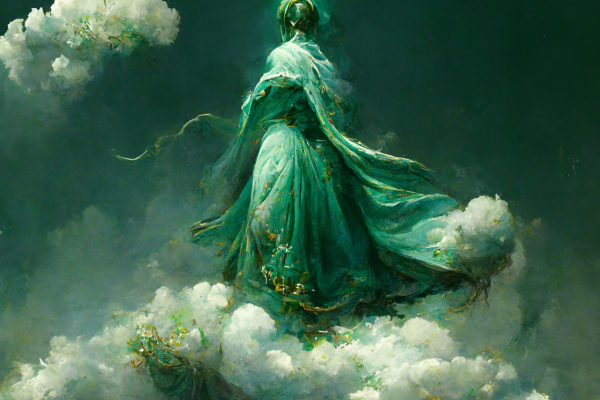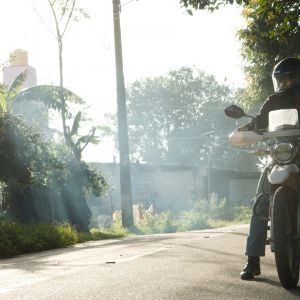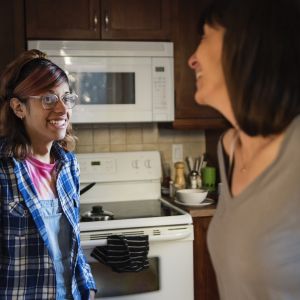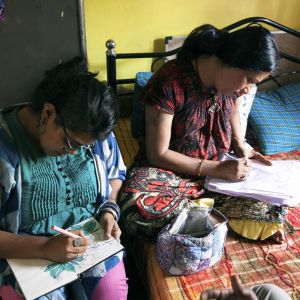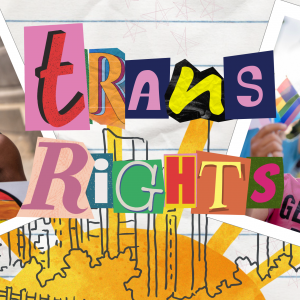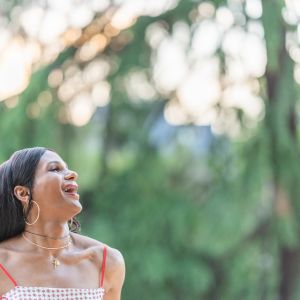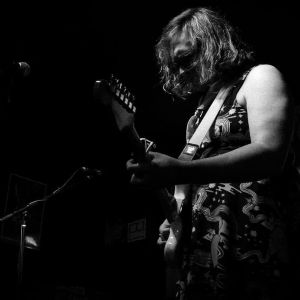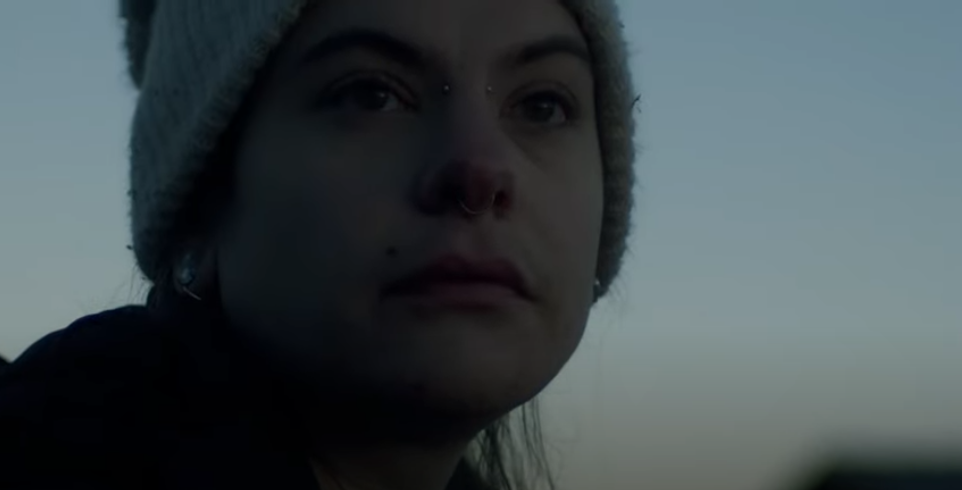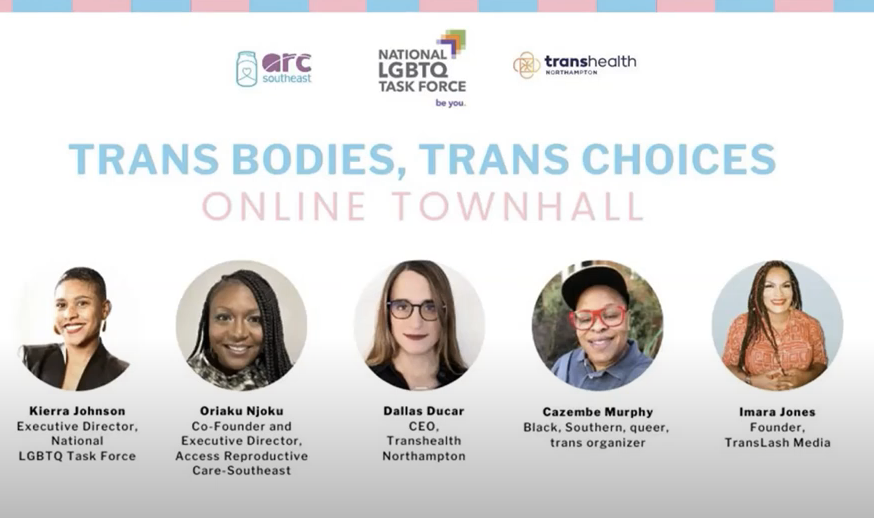By St(ephanie)Ann, “Stann”, hey/hem/hez
I am a Two-Spirit trans person and I live with disabilities. I have Ehlers-Danlos Syndrome and Post-Traumatic Stress Disorder (Complex/Dissociative subtype). I have survived Lyme Disease, Endometriosis, police brutality, and two car accidents caused by negligent drivers. I live with my service dog, Elliott, and my mobility device, Rolo Tony. I own and operate a holistic health business as a Reiki Master, Teacher, and Intuitive Healer.
I have always been a healer of others in my life. I discovered I was Two-Spirit when I started learning more about my heritage. My father’s side of my family has roots in the Algonquin and Oneida territories, now known as the border between Canada and the United States, northeast of Lake Erie; the home of Great Lakes Indigenous People. In the early 1600s, French fur traders colonized Algonquin and Oneida land. They began taking cis women as wives to procreate their population and “kill the Indian.” This violence created a strict shift into the gender binary and removed Two-Spirit folks from their duties as medicine people and caretakers of their tribes. We were the mediums between the physical and spiritual worlds. We were trusted to communicate with the spirits that give us life on this planet and translate that information into useful action in our communities. This history informs my belief that trans people have incredible power. We navigate and investigate aspects of our lives that cis folks don’t bother to engage with. Today, our world is split into so many binaries beyond gender. Binaries can trick us into believing there are only two options. This happens in the healing community as well because the general consensus is that a path to healing is linear, predictable, and within a binary of “good” and “bad.” I feel it is my purpose to help folks free themselves from the separate nature of binaries (me vs you, us vs them) that cause us so much pain in our experiences of the world. Over time, my disabilities gave me another kind of insight into what it means to do this work.
I was an active kid growing up in rural New England. I went horseback riding, swimming, and canoeing. I took ballet, gymnastics, and yoga. I played softball, hockey, and tennis. Quickly, it became obvious how different I was. Athletic environments hyperfocus on physical presence. My body made shapes that were considered “impossible” and performed beyond most expectations. I could do full splits on command and comfortably rotate my left shoulder 360 degrees in its socket. My ballet turnout looked inhuman; as if my feet were on the wrong ankles. The coaches were impressed. Peers were jealous or grossed out by my body.
Then I started getting injuries from hypermobile limbs, which is a characteristic of Ehlers-Danlos syndrome. EDS is a genetic disease that affects the connective tissue of the body—mainly skin, joints, and blood vessel walls. My major issues are velvety skin that easily bruises or breaks, poor wound healing, elastic skin that stretches past limits of “normal” range, hyper-mobile joints, digestive issues, and frequent dislocations. If I spoke to an adult about the pain in my joints, I was immediately dismissed. You’re fine. You’re young. You do this all the time. You’re stronger than you think. Walk it off. It made no sense to the people around me that I could be so physically able but in so much pain. The doubt and distrust of my body were sewn early on. This was my life before puberty.
I got my period when I was fifteen during a sleepover. After teasing me about how “behind” I was, my friends celebrated, but I was miserable. I didn’t want to become a “woman”—whatever that meant—and I didn’t know how to articulate it without the risk of being doubted or ignored. I had little faith in the adults around me to provide the medical care and protection from harm that I needed.
That first period lasted an entire month. It was the worst pain of my life. I thought it would never stop. My legs would go numb and I’d be stuck in bed, but the adults in my life didn’t believe my pain. The school nurse got suspicious after seeing me multiple times in a month. Counselors got involved. They asked me if I was being abused by my parents because I was so sick all the time. A nurse even accused me of faking the pain to get out of class. Peers whispered around me that I just wanted attention. They thought I wanted people to “feel bad” for me for not having friends, my divorced parents, or my dad’s Multiple Sclerosis (MS). Teachers and school staff told me in counseling sessions that “it happens to all women” and that I would “get used to it.” Plus, they would assert—“don’t you want to have children someday?”
My body was a warzone. “Kids someday” was the body armor they tossed me. Soon, my mother recognized what was wrong. This was 2003, and endometriosis was not discussed openly, but she grew up with endometriosis in the 1970s. Her parents and doctors didn’t believe her either. So, she believed me. She believed that my joints were swollen and achy. She believed that the bleeding just did not stop. When I asked her how to make it go away she said “pregnancy, childbirth, and a hysterectomy.” I decided I would get a hysterectomy when I turned eighteen. My mother never discouraged me. She simply held the space for us to be sad, grieve our losses, and try to care for ourselves through the process. The conversation felt like another initiation into a more exclusive club: life with a disability that no one could see and even fewer understood. It was meant to be a conversation about support and trust because she wanted me to be prepared for a future of being doubted.
This disability also directly impacts my gender and sexuality from a deeply rooted place. Those organs did not belong in my body. They did not function in my body. So my advocacy for a hysterectomy was not only gender-affirming care, it was life-saving. I believe it was my responsibility to care for myself by having the procedure. It was my responsibility to the people in my life who never had a choice, my ancestors who were enslaved to procreate with the white colonizers, and their children born into that trauma. My hysterectomy was my way of breaking the chain of destruction in my lineage caused by the forced performance of colonial binary gender roles.
Looking back, I can see how witnessing and experiencing ableism prepared me for experiencing transphobia. Growing up with a visibly disabled person in our family showed me how horribly ableist society is to disabled people. My father came to as many of my school functions as possible. I found it fascinating (and gross) how threatened these able-bodied white people were by a man using a wheelchair. In school, I would hear people whisper cripple, gimp, handicapped, sick, weak, and poor kids behind my back. Still, I always wanted him there. Ableism is directly based on someone’s arbitrary measurement of what a body should be. It’s based on the differences between a “good” body versus a “bad” body and all the gendered connotations that come with it. People equated my dad’s difficulty walking independently with being a weak man, and therefore associated it with being a bad father. After my mother’s hysterectomy, she struggled with what it meant to be a woman if she could no longer carry children. My mother, born early in the 1960s, was also teased for being a tomboy growing up. She said they called her queer and tranny because she wanted to wear jeans and climb trees. Ableism and transphobia harm everyone. The obsession with an imperfect binary limits our society as a whole. However, as a trans and disabled person, I am forced to navigate these constructs intimately. With that knowledge, part of my healing work is to help undo them entirely.
In 2020, I was at home, as most of us were. I started looking for support groups for trauma survivors, two-spirit folks, and disabled folks. My main source of information is Disability Twitter, Queer/Trans, and Two-Spirit Twitter. Through those communities, I was able to access support groups from all over the world where it was a guarantee I would be in the “room” with someone like me. The flood of voices, stories, and connections was pretty overwhelming at first. I made my Twitter account private, have no followers, and only use it as a resource tool for building community off the platform. I have found so many resources by us, for us that have helped me find freedom from the binary construct.
Transness and disability are organic ways of existing between the polarities of the human condition. Life at the intersection requires creativity, resilience, and support from one another. We are the opposite of the separateness that isolates us and tricks us into believing messages of unworthiness in our bodies. Our communities are our lifeblood. We take care of each other. We hold space for our struggles and we lift one another up in our successes. We exist without the approval or assistance of systems that seek to eliminate us. We speak out against our internal colonizers, ableists, and transphobes that formed as a result of living under these systems. Every disabled person’s joy and every trans person’s happiness is a direct action of dissent against white supremacy. Separateness is the illusion that drives this suffering. The reality is love and radical acceptance because it is what we, as humans, all desire.
Featured Image: “We’re all linked in this life” by LumiNola.
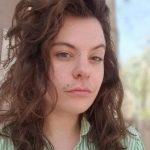
St(ephanie)Ann, “Stann”, hey/hem/hez, was born in Connecticut on Leap Day. Hey is a disabled Two-Spirit musician, poet, and healer. Hey is the proud owner of Prism Wellness Works, a holistic health initiative based in the desert Southwest. Stann is a Reiki Master and Theta Healing ® practitioner working to return autonomy to the LGBTQIA2S+ community. Find hem online at www.prismwellnessworks.com


